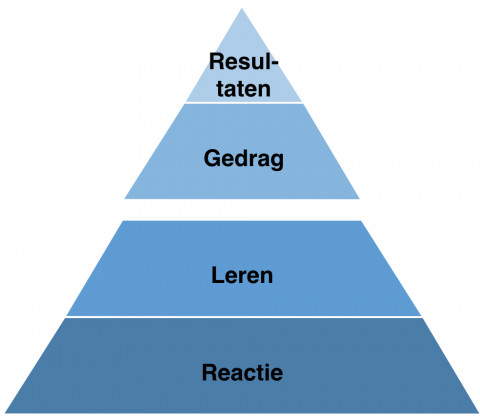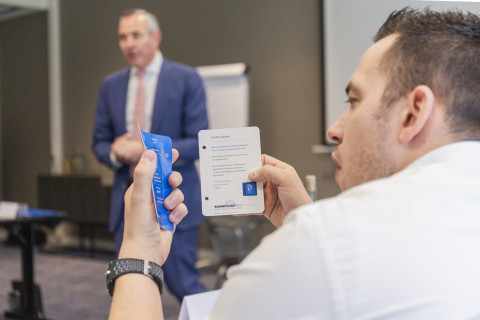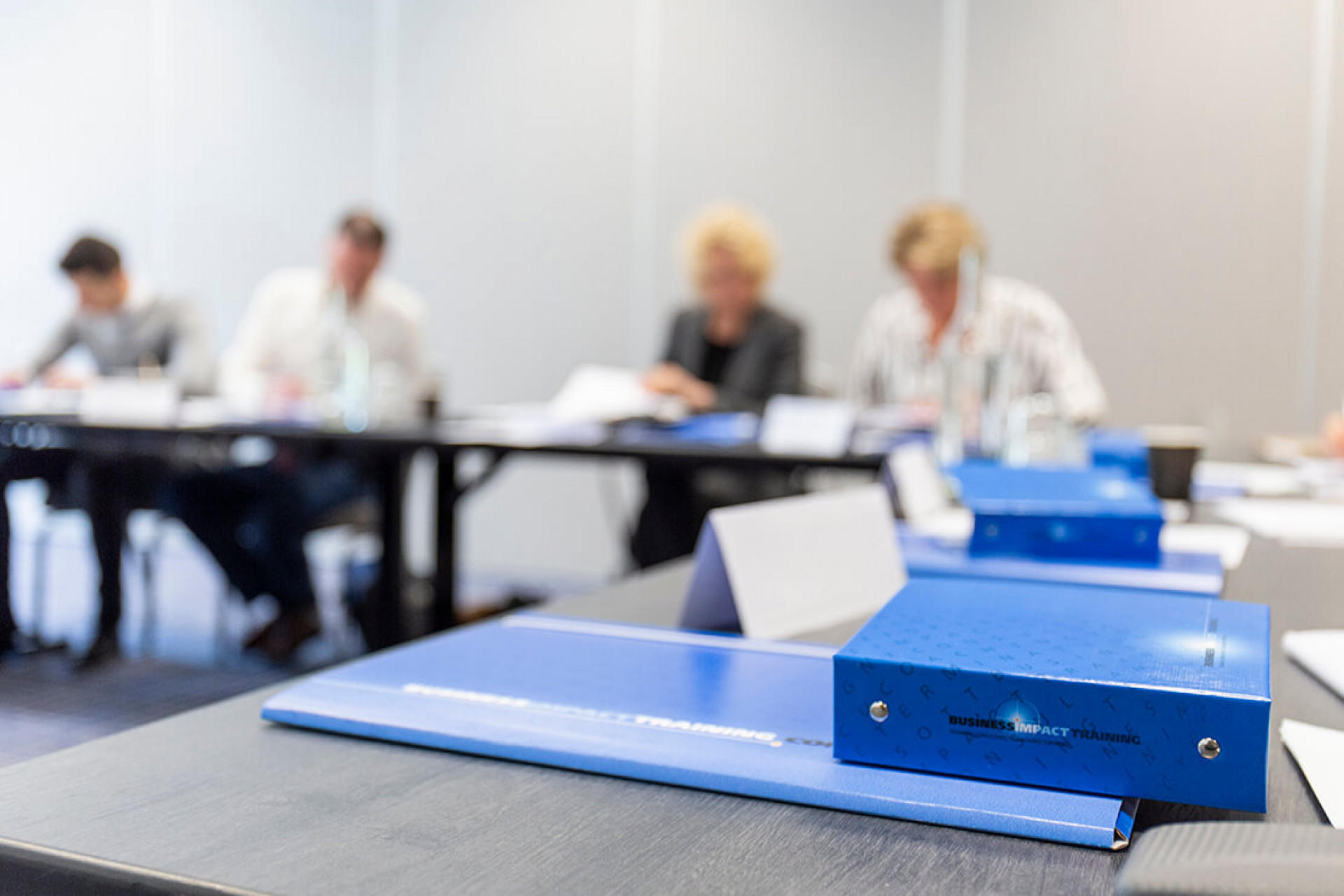What is the kirkpatrick evaluation model
Training always means an investment in money and time. The aim of the training is that people adjust their behavior and will perform their work better and more efficiently. Both in the short and long term. We use the Kirkpatrick evaluation model to keep the return on investment clear.
Our training courses have measurable impact
We think it is important that both costs and returns are measurable so that you have a clear picture of the investment and the return on investment. We can determine this ROI and make it measurable in consultation with you.
How does the Kirkpatrick Model work
Kirkpatrick’s evaluation model is used to determine the ROI of our training courses. With this model we can evaluate the training on 4 levels depending on the objectives and the tools used. We do a number of measurements and scores every training and a number of others can be measured optionally. In order to achieve a good unambiguous ROI, it is important that we discuss and coordinate this in advance.

Below you will find more information about the 4 levels and the tools that we can use here. The first 2 levels measure the training. Levels 3 and 4 measure the participant in the period after the training.
Level 1 – Response
At this level, we measure the extent to which participants find the training useful, interesting and valuable for their job. We always measure at this level. We use 2 tools for this:
Day evaluations: Each participant evaluates each training day individually on 4 criteria with which we can measure the response.
Final evaluation: At the end of the program, each participant fills in a questionnaire. Some of the questions are about this level

Level 2 learning
At this level we measure the extent to which participants acquire the intended knowledge, skills and attitude based on their commitment. We always measure at this level. We use 2-3 tools for this:
Feedback from practical experiences: The participant feeds back his / her application and learning of the material and what he / she encounters every day.
Final evaluation: At the end of the program, each participant fills in a questionnaire. Some of the questions are about this level.
Coaching action sheets: Each day the participant defines the actions to be taken. By subsequently coaching from the organization focused on these action sheets, the learning process will go faster and the organization can also assess the participants at this level.
The 2 levels below measure the participant in the period after the training
Levels 3 and 4 of the Kirkpatrick model relate to the behavior of the participants and the outcome of the training. These levels are partly measured by us and will also have to be partly measured by you as an organization. In order to measure as effectively as possible, clear objectives and measuring points will be drawn up in advance in consultation.

Level 3. Behaviour
At this level we measure the extent to which the participants apply what they have learned in their work. This will mainly be determined by observations and measurements as to whether and how the behavior is applied in practice. In order to measure this clearly, the organization must clearly define in advance what behavior it wants to see and see grow. The first 3 tools are used by us anyway, but are mainly filled by the participant himself. The measurement from the organization is important here because it is an objective measurement of whether the organization sees the changes.
Feedback from practical experiences: The participant feeds back his / her application and learning of the material and what he / she encounters every day.
Final evaluation: At the end of the program, each participant fills in a questionnaire. Some of the questions are about this level.
Optionally can also be measured by:
361 final analysis: Usually an analysis is done 361 at the beginning of a process to score the participants on the various competencies and skills. This is filled in by the participant and people around him. By doing this again a few months after the last training, the growth per competence / skill can be determined.
Coaching and measuring organization: By coaching the participants from within the organization and measuring the predetermined behavior, this can also be measured well at this level.

Level 4 Results
At this level in the evaluation model, we measure the extent to which the intended results have been achieved through the training and other activities undertaken. This is done through observations and measurements that show whether change after training has a positive impact on results. The first 2 tools from the kirkpatrick evaluation model are used by us anyway, but are mainly filled by the participant himself. The measurement from the organization is important here because it is an objective measurement of whether the organization sees the changes.
Feedback from practical experiences: The participant feeds back his / her application and learning of the material and what he / she encounters every day.
Final evaluation: At the end of the program, each participant fills in a questionnaire. Some of the questions are about this level.
Measuring organization: By measuring the predefined KPIs and results for the participants from within the organization, insight is gained at this level.